Genre: Action Developer: Imagineering Publisher: Absolute Ent. Players: 1 Released: 1995
Every game system has at least a few games that go completely unnoticed, games that came and went with little to no advertising, fanfare or review. You know they saw at least some time on store shelves somewhere. People bought them and played them. Yet somehow, no one seemed to have anything to say afterward. RDF: Global Conflict is just such a game for the SEGA CD. Released in 1995 by Absolute Entertainment, this game is practically the poster child for “fall through the cracks,” as it is virtually unknown when you search for information on it in terms of reviews or even videos. But is it this way because people were too busy playing the well-known SEGA CD games to bother with it, or is it because people blocked it out of their minds like some scarring, painful memory? Read on.
The Cold War may have ended, but that doesn’t mean the battle isn’t still on-going. In the vacuum created by the fall of the former Soviet Union, smaller factions and groups have arisen to try and claim some of the unstable regions left behind by the one-time super power’s demise. As a result, the world is still in danger, and someone’s needed to protect it when these small armies try to go up against the U.S. and its allies. That’s where you and the Rapid Deployment Force come in. You’re going to be under the command of General Rock Maddick, put behind the controls of the mighty M1A2 Abrams Main Battle Tank, and sent alone into these war zones to bring order to the chaos. It may seem like a suicide mission, but just follow the General’s orders. He won’t steer you wrong. Now get moving, soldier!
After the game begins with some rough looking FMV (which I’ll touch on later), you soon see that Core Design weren’t the only ones to make good use of the SEGA CD’s scaling capabilities. Trees, rocks, buildings, the ground, the enemies… they all scale pretty smoothly, and from a decent distance at that. The game rarely gets choppy, even when there are a fair number of enemies and objects scaling on the screen, so the visuals keep a pretty steady frame rate. The sprites themselves don’t look too bad either, with some good details and shading on things like the tank graphics around the play window, vehicles, structures, and different types of vegetation. The sprites also get re-colored for the given set of regional missions you’re on. And while the trees, rocks and such are one-side only sprites, the enemy vehicles and structures are drawn from quite a few angles, giving them a better sense of being three dimensional objects as you/they respectively move about.
The stage graphics are a little more of a mixed bag. For the ground, there are roads, various types of different surfaces, water, and what have you, all making the ground feel like something other than a flat, featureless surface as it goes by under you. It’s still technically flat (no hills to be found), but it’s not utterly barren, and looks fine. The backgrounds however, are more up and down in terms of visual quality. Some, like the afternoon ones, look all right. Not fantastic, but with some decent attention to details, despite them being a bit color-challenged. Yet there are some, like the sunset one for the desert missions, which just look rough. With a very low color count, and not nearly as well handled with the few colors that are there, these backgrounds needed more work. Despite this issue, the stages and backgrounds do feature three main areas (meadow, desert and arctic), and all three change colors as you go from mission to mission (cycling through nighttime, sunset, and sunny afternoon). So, on the whole, while there are some rough spots, the graphics are generally done well, thanks to some nice use of scaling, and some good sprite work.
When it comes to sound, “above average” fits the bill. The music will sound familiar at times to some, as it seems to draw inspiration from various songs used in other famous games. At times, you’ll hear echoes of Wing Commander or Heretic in the music that plays during the missions. These songs also have a General MIDI feel instrument-wise and strive for an overture “ride into battle” kind of mood. But there are a few issues with the music, which I’ll get to shortly.
With the sound effects, you get what you’d expect with this kind of game. Explosions, vehicle sounds, warning alarms… it’s all here. They do a pretty solid job in this area, as things like helicopters, tank barrel blasts, hitting something, explosions, your tank’s engine, and such, sound good. Granted, there are others (like being hit by a shell) that aren’t very impressive, and feel wimpy by comparison, but the sound effects come off well overall, and stand out more in terms of quality than the music.
The gameplay in RDF: Global Conflict has a bit more depth to it than its initial arcadey appearance suggests. Right up front, the controls show you this. With their default settings, X and Y are accelerate and backup respectively, A is fire, B is weapon select, and C is what you hold down to use the D-pad to speed up and slow down (for those who only have a three-button controller). Plus, up and down on the D-pad, when not holding the C button, raises and lowers your tank’s barrel. Through 15 missions (three areas with five stages a piece), you’ll use these controls on mostly basic “find it and kill it” objectives. Thankfully, those missions do get broken up a little, with one mission having you escort a convoy through enemy territory, and another where you have to keep an enemy convoy from reaching its base.
Speaking of enemies, helicopters, tanks, trucks, hovercrafts, motorcycles, mine fields, bunkers… those and more will be out to get you. You have four weapons to use against them all, ranging from shells and a machine gun, to some lock on missiles, and a smoke screen for temporary cover. You’ll also have radar at your disposal to locate enemies (gray, yellow and red dots), objectives (the blinking dots), and some helpful items (blue dots). But those weapons and radar won’t do much against the environments, which will be fighting you in their own way. There are trees and rocks to slam into that damage your tank, water that stops you dead in your tracks, and areas of muddy or soggy ground that slow you down as you try to move.
To throw a little curve ball into the action, the game gives you limited weapons and fuel. But while you can run out of all of these things, there are three to four trucks in each mission that, when blown up, drop individual replenishers for your health, fuel, and weapons (plus, there’s a hidden cow on each stage that gives you all three… yes, a cow). This additional trait of limiting your ammo/fuel means you’ll have to think a bit more carefully, and not waste too much time and resources as you try to make your way through each mission. And while we’re on the subject of wasting time, don’t sit in one spot for too long, because after about 10 seconds, you’ll find a helicopter gunning for you if you don’t get moving again.
So, it’s not sounding too bad, right? Well, there’s always something wrong with a game, and this one’s no exception. For starters, we have the FMV. Very grainy and filled with horrid “acting” and poorly done CGI, these are definitely the visual low point of the game. They’re just hard to sit through, as they’re not even bad in a funny Resident Evil way. Unfortunately, there’s plenty of FMV present, with the opening, ending, and mission briefings using it extensively.
Another considerable issue is how this game tends to get stale after a few missions. While the game does put out the occasional new vehicle/enemy to face, the stages themselves don’t offer up anything new that isn’t present in the very first stage. As a result, the action doesn’t build up that well, and the game starts getting dragged down by its repetitive nature by the time you’ve gotten to the end of the first set of missions.
Additionally, we have the somewhat unintuitive controls. As I showed you a few paragraphs up, they’re a bit spread out by default, but they’re also a little mushy at times. And while you can thankfully reassign the buttons to be more to your liking, there’s no particularly intuitive setup. If you have a six-button controller, you can play with them a bit more, but if a three-button one is all you have, the controls will prove cumbersome in the heat of battle.
On the more minor side of the game’s issues, for five missions at a time, you’ll hear the same song looped over and over. The music’s generic without being ear offending, but it gets old after the tenth looping during just one mission. The songs aren’t very memorable either. Nothing about them stands out, and the result is them feeling like they’re only around to fill a potential aural void, rather than truly contributing to the game.
Another point to be quickly noted is that the sprites do get rather pixilated pretty quickly, even before they’re right in your face. Then there’s the odd way that once in a while, some big enemies will suddenly turn around EXTREMELY quickly, giving the computer an unnatural and unfair advantage at times during fire fights. Your turning speed is almost always the same (it’s a bit quicker when you’re stopped), so the way the computer’s tanks and big trucks can randomly pull a 180º in under a second is just cheap.
Lastly, we come to the amount of the screen that the action is actually contained in; namely, a bit over one third. I’m sure this cropping helps with the framerate and such, and that it was done to make it seem like you’re driving the tank. But it also limits the ability of the scaling visuals to really pull you into the action… which was kind of the point of the scaling feature in the first place.
So, what can be said about RDF: Global Conflict when everything’s taken into account? The music quality is decent with its MIDI roots, the sound effects are good, the scaling is put to good use, the sprites and some aspects of the stages look nice, and the challenge level is solid. Unfortunately, some of that challenge comes from dealing with the controls. Factor in how the music is quite repetitious, the gameplay grows rather stale after just a few missions, and the FMV is downright abysmal, and this game gets knocked down a peg or two. RDF’s not utterly broken anywhere per se, but its potential gets mired in issues that come from a lack of the game makers taking the time to polish and streamline things a bit more. And while the game can offer some fun if you take it in short playtime bursts, in the end, it’s not a memorable experience that’ll have you coming back again and again like Battlecorps, AH-3 Thunderstrike and Soul Star do. It was a decent effort, but decent is really all RDF is.
Score: 5 out of 10

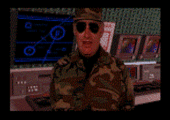
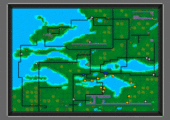
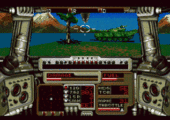
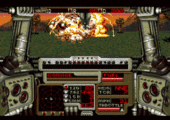
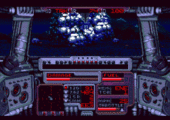
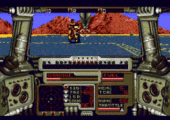
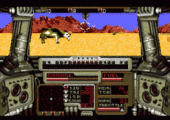
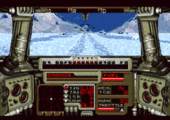
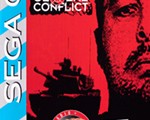
Recent Comments